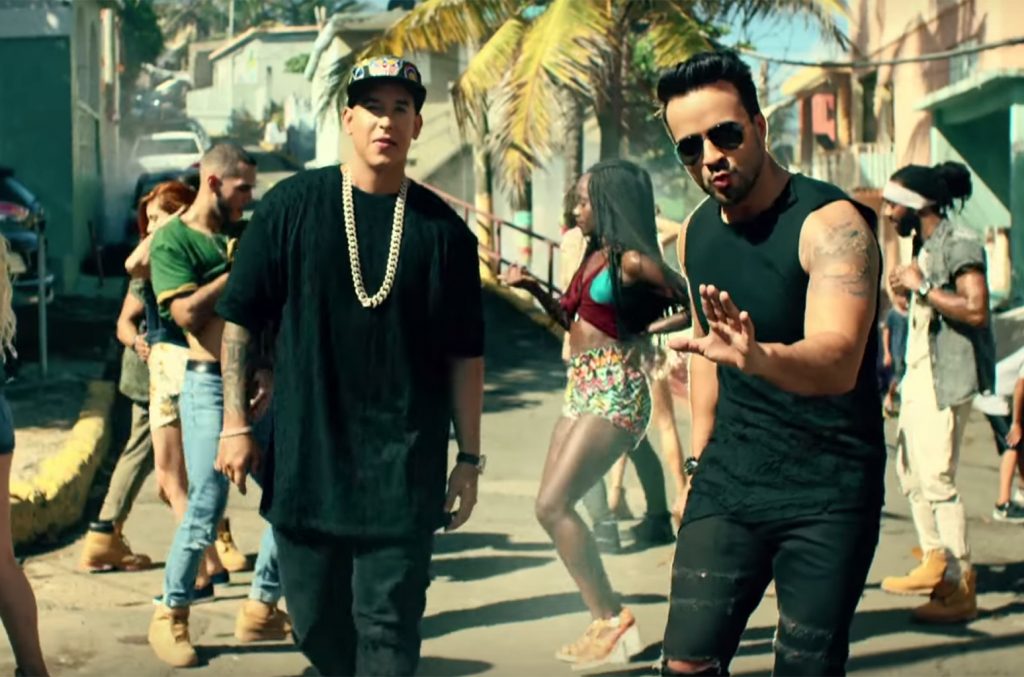The “Despacito” remix has simultaneously made mouths drop and eyes roll as it’s shot up the Billboard Hot 100, and its ascension has introduced a seemingly endless stream of conundrums: On one hand, it’s great to see native Puerto Ricans Luis Fonsi and Daddy Yankee reach new heights; on the other, it comes tangled in the dynamic of Anglo artists capitalizing on sounds endemic to Latino communities. On one hand, it’s exciting to see a track in Spanish become the number one song in America for the first time in 20+ years; on the other, Justin Bieber has flagrantly mocked the language and lyrics, making a boneheaded, borderline racist show out of rhyming “Dorito” and “burrito.”
Add another layer to this tangled web of pop politics. Yesterday, El Nuevo Dia and Billboard reported that Puerto Rico has seen a 45 percent increase in tourist interest since “Despacito” became an international hit, and local tour organizations have incorporated some of the “Despacito” video’s most iconic locations into sightseeing itineraries. The boost comes at a good time; crushed under the weight of a $123 billion debt (about $49 billion in pension obligations and $74 billion in bond debt), the island filed for bankruptcy in May.
No one is arguing that the influx of money isn’t helpful to Puerto Ricans, but here’s where things get tricky yet again: While bolstering Puerto Rican tourism is an undoubtedly good thing, it’s happening through a video that is a clear example of island exoticism and corporate manipulation. Since its release this January, the video has been viewed more than two billion times, which means a lot of eyes are on this interpretation of Puerto Rico. But the scenes in “Despacito” are glossy, over-polished versions of San Juan, with only fleeting moments—old men playing Dominos, a kid getting his haircut—speaking to the inner life of locals. Through the “Despacito” lens, Puerto Rican neighborhoods become a glittering beer blast filled with scantily clad dancers. These images insinuate that tourists can live a perpetual party here, rather than engage with a culturally complex island that has faced strife and challenges beyond its recent economic woes. Historical context and nuances are wiped from the video’s one-dimensional takes, reducing regions to background sets for models to gyrate.
A portion of the video was shot in La Perla, a historic neighborhood that in the 19th century served as a home to black and homeless people pushed outside of city walls. While the neighborhood continues to grapple with poverty, it has benefitted from the “Despacito” swell. El Nuevo Dia reported that residents of the neighborhood have responded to the newfound interest in La Perla with joy. However, the foreign attention is akin to the commonly discussed, albeit poorly named, concept of “ghetto tourism,” wherein wealthy tourists travel to impoverished regions of the world (e.g., Brazilian favelas) for new experiences, only to retreat back to their comfortable homes. The hope is that tourists arrive to areas like La Perla with an understanding that these are real homes for real people—not museums and exhibition spaces made for observation or gawking.
Justin Bieber doesn’t appear in the video, but he’s no stranger to the complex world of celebrity-spurred tourism—and he’s a cautionary tale of what can happen if foreigners are drawn to regions without the right context. He faced controversy after releasing his video for “I’ll Show You,” set to multiple Icelandic landscapes that he treated with little respect. Bieber rolled around in environmentally protected moss that takes hundreds of years to regrow, swam in a glacial lagoon that can cause hypothermia, skateboarded atop a historic plane, and caused general headaches for the Icelandic tourism department, who feared tourists inspired by the video would behave with the same level of jackassery.
Fonsi reposted news of the “Despacito” tourism boost, saying, “What a joy it is to read this in international media. Puerto Rico is the true protagonist of this song and this video.” Tourists should also see Puerto Rico as a real protagonist and celebrate the island’s neighborhoods for their cultural contributions outside of a catchy chorus.




